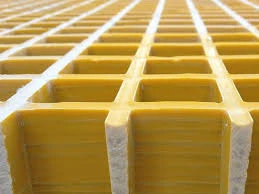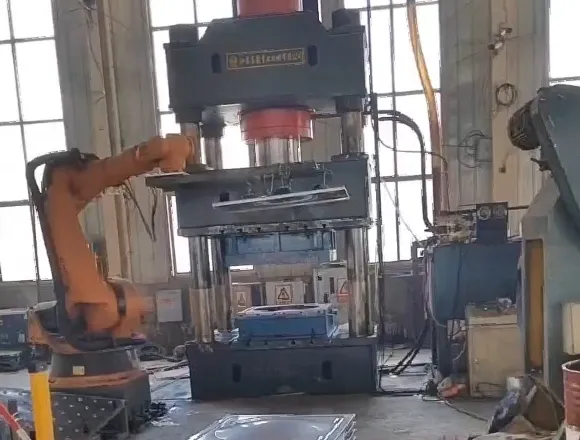loading...
- No. 9, Xingyuan South Street, Dongwaihuan Road, Zaoqiang County, Hengshui, Hebei, China
- admin@zjcomposites.com
- +86 15097380338
- Welcome to visit our website!
FRP Grating Sheets Lightweight, Corrosion-Resistant Solutions
- Understanding the Importance of FRP Grating Sheets in Modern Construction
- Technical Superiority: How FRP Outperforms Traditional Materials
- Market Analysis: Leading FRP Grating Manufacturers Compared
- Custom Solutions for Diverse Industrial Requirements
- Step-by-Step Guide to FRP Grating Installation Best Practices
- Real-World Applications: Case Studies Across Industries
- Future Trends: Innovations in FRP Sheet Piling Technology

(frp grating sheet)
Why FRP Grating Sheets Are Revolutionizing Industrial Infrastructure
FRP (Fiber Reinforced Polymer) grating sheets have emerged as a game-changer in sectors requiring corrosion-resistant, high-strength materials. With a 40% faster installation time compared to steel alternatives and 75% lower lifetime maintenance costs, these composite solutions address critical challenges in chemical plants, offshore platforms, and wastewater treatment facilities.
Technical Advantages Over Conventional Materials
Key performance metrics demonstrate FRP's superiority:
| Parameter | FRP Grating | Steel | Concrete |
|---|---|---|---|
| Weight (kg/m²) | 12-18 | 45-60 | 240-300 |
| Corrosion Resistance | Excellent | Poor | Moderate |
| Load Capacity (kN/m²) | 5-10 | 15-25 | 8-12 |
| Service Life (years) | 25+ | 10-15 | 20-25 |
Manufacturer Comparison: Key Specifications
| Brand | Thickness Range | Max Load | Fire Rating | Price/m² |
|---|---|---|---|---|
| CompositeCo | 25-50mm | 12kN | Class A | $85 |
| PolyTech | 20-40mm | 9kN | Class B | $72 |
| FiberCore | 30-60mm | 15kN | Class A | $94 |
Tailored Engineering Solutions
Customization options include:
- Resin types: Vinylester, Polyester, Phenolic
- Surface textures: Grit-coated, Smooth, Anti-slip
- Panel dimensions: Up to 6m x 2m standard sizes
- Color coding for safety zones
Installation Protocols and Safety Measures
Proper FRP grating installation requires:
- Substructure alignment within 3mm tolerance
- Thermal expansion gap calculation (typically 10mm per 3m)
- Non-conductive fasteners for electrical environments
- UV-resistant coatings for exterior applications
Industry-Specific Implementation Cases
Oil Refinery Project: 8,000m² of FRP sheet piling withstood H2S concentrations exceeding 500ppm for 7+ years with 0% material degradation.
Municipal Bridge Deck: Composite grating reduced dead load by 62% compared to concrete, enabling $1.2M savings in support structure costs.
Advancements in FRP Sheet Piling Technology
Recent developments include hybrid FRP/thermoplastic composites achieving 92% recycled content and smart grating systems with embedded strain sensors for real-time structural monitoring. These innovations position FRP as the material of choice for next-generation infrastructure projects.

(frp grating sheet)
FAQS on frp grating sheet
Q: What are the key advantages of using FRP grating sheets?
A: FRP grating sheets offer corrosion resistance, high strength-to-weight ratio, and durability in harsh environments. They are non-conductive and require minimal maintenance compared to metal alternatives. These properties make them ideal for industrial platforms and walkways.
Q: How does FRP sheet piling differ from traditional materials like steel or concrete?
A: Unlike steel or concrete, FRP sheet piling is lightweight, immune to rust, and resistant to chemicals and saltwater. It simplifies installation in marine or corrosive environments while providing long-term structural stability with reduced lifecycle costs.
Q: What steps are critical for proper FRP grating installation?
A: Proper FRP grating installation requires surface preparation, accurate cutting with carbide tools, and secure fastening using corrosion-resistant hardware. Ensure adequate support spacing and follow manufacturer guidelines to prevent warping or stress points.
Q: Can FRP grating sheets be customized for specific projects?
A: Yes, FRP grating sheets can be tailored in mesh size, thickness, and resin type to meet load requirements or environmental conditions. Custom colors and anti-slip surfaces are also available for safety and aesthetic needs.
Q: Where is FRP sheet piling most commonly used?
A: FRP sheet piling is widely used in seawalls, flood control barriers, and retaining walls in coastal or chemical-heavy areas. Its resistance to degradation makes it suitable for infrastructure exposed to moisture, UV rays, or abrasive substances.
-
GRP Structures: The Future of Lightweight, High-Performance EngineeringNewsJun.20,2025
-
FRP Water Tank: High-Performance Storage for Corrosive and Clean Water SystemsNewsJun.20,2025
-
FRP Square Tube: The New Industry Standard for Chemical and Structural ApplicationsNewsJun.20,2025
-
FRP Pultruded Profiles: The Ultimate Choice for Lightweight Structural StrengthNewsJun.20,2025
-
FRP Handrails: The Safer, Smarter, and Stronger Choice for Modern InfrastructureNewsJun.20,2025
-
FRP Grating: The Smart Solution for Durable, Lightweight Industrial FlooringNewsJun.20,2025
-
Why Choose a Galvanized Water Tank for Your Storage NeedsNewsMay.21,2025
